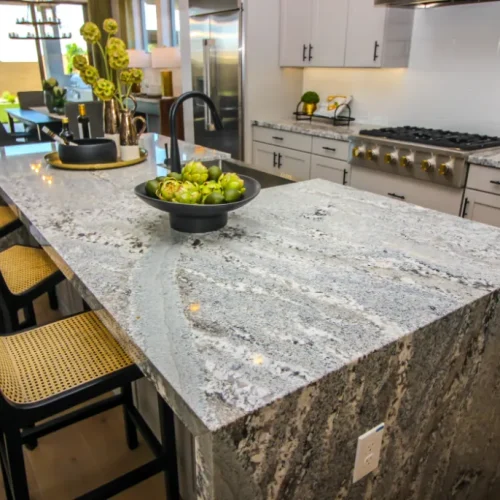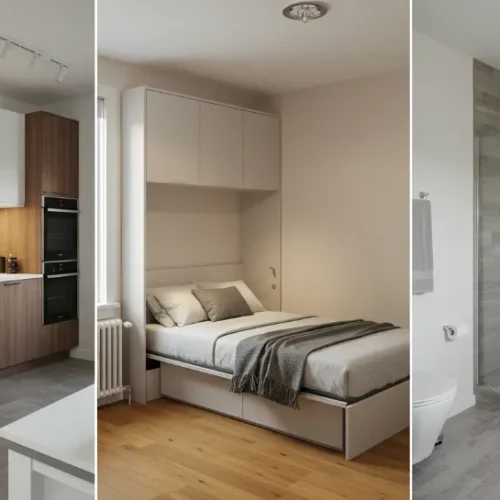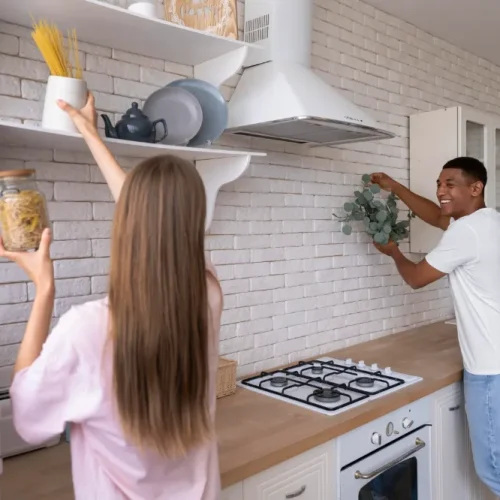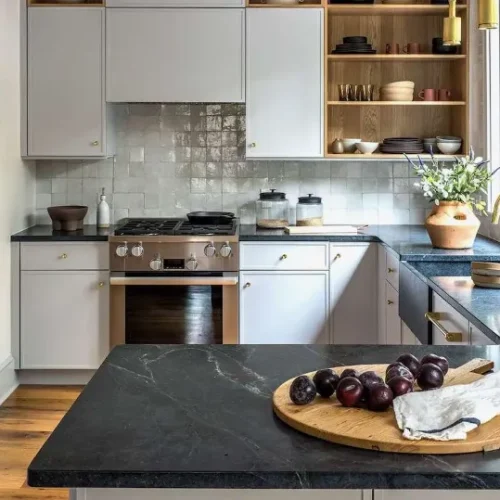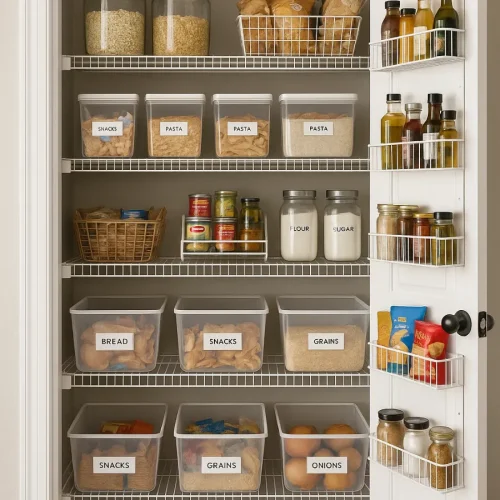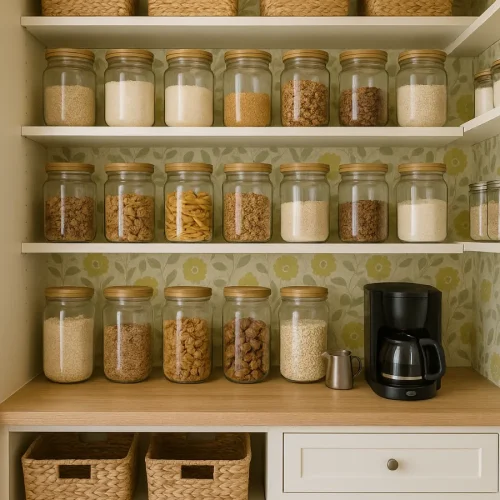
Creating your dream kitchen starts with understanding how design impacts your daily cooking and cleaning routines. Smart kitchen renovations focus on workflow efficiency, durable materials, and strategic storage solutions. Modern kitchen design balances beautiful aesthetics with practical functionality. The right renovation plan transforms any kitchen into a space that simplifies meal preparation while reducing maintenance time.
Planning Your Kitchen Layout for Maximum Efficiency
Understanding the Work Triangle Foundation
The traditional work triangle remains the foundation for efficient kitchen design. This concept connects your sink, stove, and refrigerator in a triangular pattern that minimizes unnecessary movement during cooking. Each leg of the triangle should measure between 4 and 9 feet for optimal workflow.
Clear pathways between these three points prevent bottlenecks during busy cooking sessions. Obstacles like islands or peninsulas should never block the natural flow between these essential areas. Open countertop space within the triangle provides essential prep areas where you can quickly move ingredients from storage to preparation to cooking.
Choosing the Right Layout Style
Five proven layouts work best for different kitchen sizes and shapes. Galley kitchens maximize efficiency in narrow spaces with parallel countertops measuring 3 to 4 feet apart. Everything stays within easy reach, making this layout perfect for single cooks or small families.
L-shaped layouts provide ample counter space and work well in most home sizes. They offer natural work triangle formation while leaving room for dining areas or additional storage. U-shaped designs deliver maximum storage and counter space for serious cooking enthusiasts who need extensive prep areas.
Island kitchens offer central accessibility and additional storage while maintaining the work triangle concept. The island becomes a focal point for meal preparation and casual dining. G-shaped layouts add a peninsula for extra storage while maintaining efficient workflow patterns.
One-wall designs work best in studio apartments or small homes with limited square footage. All appliances and storage line up along a single wall, keeping everything accessible within a few steps.
Optimizing Traffic Flow
Consider your existing space constraints when selecting the optimal layout. Ensure adequate spacing between work areas to accommodate multiple cooks without interference. Plan for appliance door swing clearances in tight spaces, especially for dishwashers and ovens that require additional room to open fully.
Account for natural traffic patterns through your kitchen. High-traffic areas should remain clear of work zones to prevent disruptions during meal preparation.
Creating Functional Work Zones
Beyond the Traditional Triangle
Modern kitchens benefit from designated zones that go beyond the traditional triangle approach. Multiple work zones allow several people to cook simultaneously without getting in each other’s way. This approach works especially well for families who enjoy cooking together or entertaining guests.
Zone planning should reflect your actual cooking habits and kitchen inventory. Consider how you move through meal preparation from ingredient gathering to final cleanup.
Essential Kitchen Zones
The prepping zone serves as your meal preparation headquarters. Position this area near your cooking zone with cutting boards, knives, measuring tools, and pantry essentials stored within arm’s reach. Include prep bowls, sheet pans, and your salad spinner in nearby drawers or cabinets.
Your cooking zone centers around the range and oven area. Store pots, pans, cooking utensils, and seasonings for immediate access during cooking. Keep cooking fats, salt, and pepper within one step of your cooktop for efficient seasoning and preparation.
The clean-up zone at your sink and dishwasher enables easy workflow during meal preparation and post-cooking cleanup. Stack prep bowls and transfer them directly to the dishwasher as you work. Items used for raw vegetables need only quick rinsing rather than full dishwasher cycles.
Your storage zone near the refrigerator handles leftover organization with containers, labels, and inventory systems. Include plastic wrap, foil, and a magnetic whiteboard for tracking refrigerator contents.
Strategic Zone Placement
Position your prep zone adjacent to your cooking area to minimize ingredient transport during meal preparation. Store frequently used items within 2 to 3 steps of their primary use location to reduce unnecessary movement.
Create logical workflow from storage to prep to cooking to cleanup. Strategic placement reduces backtracking and increases kitchen efficiency by 30 to 40 percent compared to poorly planned layouts.
Selecting Durable, Low-Maintenance Materials
Countertop Material Selection
Non-porous countertop materials resist stains and require minimal upkeep for busy families. Quartz offers exceptional durability, scratch resistance, and consistent appearance without sealing requirements. Quality quartz countertops last 15 to 20 years with proper care.
Stainless steel provides professional-grade heat resistance up to 500 degrees Fahrenheit. This material offers easy sanitation for serious cooks who frequently work with raw meats and require superior hygiene standards.
Granite delivers natural beauty with excellent heat resistance but requires periodic sealing every 1 to 2 years. Unsealed granite absorbs liquids and develops stains that become permanent over time.
Recycled glass countertops combine environmental sustainability with stain resistance and unique aesthetic appeal. These surfaces resist heat and scratches while offering distinctive visual texture.
Sink and Fixture Materials
SILGRANIT sink materials resist scratches, stains, and bacterial growth with 80 percent quartz content. These composite sinks handle heavy daily use without showing wear patterns common in traditional materials.
Undermount sink designs eliminate the raised edges where debris collects, improving sanitation and making cleanup easier. You can wipe countertop crumbs directly into the sink without obstruction.
Stainless steel sinks offer exceptional durability and heat resistance for heavy cooking use. Professional-grade steel handles boiling water and hot pans without damage or discoloration.
Flooring Considerations
Large format floor tiles reduce grout lines and simplify cleaning maintenance significantly. Fewer grout lines mean less scrubbing and sealing over time.
Engineered hardwood flooring provides smooth, mop-friendly surfaces with superior scratch resistance compared to traditional hardwood. The layered construction handles kitchen moisture better than solid wood options.
Porcelain tiles offer excellent water resistance and durability in high-traffic kitchen areas. They resist staining from spills and maintain their appearance under heavy foot traffic.
Backsplash Selection
Non-porous materials like glass and porcelain resist grease and moisture from cooking activities. Large format tiles minimize grout lines requiring regular cleaning and maintenance.
Natural stone backsplashes require sealing to prevent staining from cooking splatters and steam. Stainless steel backsplashes coordinate with appliances while providing easy cleanup with simple wiping.
Smart Storage Solutions and Organization
Custom Storage Planning
Custom cabinet dimensions based on actual kitchen inventory maximize space utilization better than standard cabinet sizes. Measure your tallest bottles and appliances to determine optimal shelf heights and cabinet depths.
Pull-out drawers and shelves improve accessibility in deep cabinets by 50 percent compared to fixed shelving. You can reach items stored in the back without moving everything in front.
Innovative Storage Features
Appliance garages hide small appliances while maintaining clean counter space for daily food preparation. Lazy Susan systems optimize corner cabinet storage efficiency and accessibility for items you use regularly.
Tray dividers organize baking sheets, cutting boards, and serving platters vertically rather than stacking them horizontally. This arrangement makes specific items easier to grab without disturbing others.
Drawer organizers separate utensils, spices, and cleaning supplies logically by function rather than cramming everything together randomly.
Advanced Organization Systems
Glass cabinet doors display collections while protecting dishes from dust and cooking grease. Soft-close cabinet features reduce noise and extend hardware lifespan significantly compared to standard hinges and drawer slides.
Strategic placement of storage near relevant work zones reduces movement during cooking activities. Under-cabinet lighting illuminates workspace and storage areas for better visibility during food preparation.
Choosing the Right Appliances and Fixtures
Modern Faucet Technology
Touchless faucets reduce germ spread and eliminate fingerprint cleaning requirements in busy kitchens. Sensor technology activates water flow without handle contact, keeping surfaces cleaner throughout daily cooking activities.
Brass body construction ensures longevity and leak resistance better than cheaper metal alternatives. Pull-down spray heads increase functionality for filling large pots and cleaning oversized dishes.
Cooking Appliance Selection
Induction cooktops provide precise temperature control with easy-clean flat surfaces that wipe down effortlessly. Sealed gas burners prevent spills from reaching internal components that require professional cleaning or replacement.
Self-cleaning ovens simplify maintenance with high-heat cleaning cycles reaching 900 degrees Fahrenheit. This feature reduces baked-on grease and food residue to ash that wipes away easily. Adding a convenient food warmer can help keep meals at the perfect serving temperature, enhancing both comfort and efficiency in the kitchen.
Combination appliances save valuable space in smaller kitchen renovations without sacrificing functionality. Microwave-convection combinations handle multiple cooking methods in a single unit.
Appliance Finish Options
Fingerprint-resistant stainless steel finishes maintain their appearance with less daily maintenance than traditional stainless surfaces. Cabinet-integrated appliances create streamlined, cohesive appearance that makes kitchens look larger and more organized.
Energy-efficient models reduce utility costs by 10 to 30 percent while improving cooking performance and reliability. Smart appliances offer remote monitoring and control capabilities through smartphone apps.
Ventilation Systems
Strong ventilation systems remove cooking odors and grease particles effectively before they settle on surfaces throughout your kitchen. Range hood CFM ratings should match your cooktop BTU output for optimal performance.
Dishwasher-safe filters simplify maintenance and improve air quality compared to disposable options. Quality fixtures with brass fittings and ceramic cartridges ensure 10 to 15 year lifespans with minimal repair requirements.
Optimizing Lighting for Functionality
Task Lighting Essentials
Task lighting over prep areas prevents shadows during food preparation that can lead to accidents or inefficient cutting. Under-cabinet LED strips illuminate countertops and storage areas effectively without creating glare.
Pendant lights over islands provide focused illumination for detailed tasks like decorating cakes or filleting fish. Position pendant lights 30 to 36 inches above counter surfaces for optimal light distribution without obstruction.
Ambient and Accent Lighting
Natural light from windows reduces energy usage during daytime cooking while creating pleasant working conditions. Ambient lighting creates comfortable atmosphere for dining and entertaining guests in open kitchen designs.
Multiple light sources allow customization based on different kitchen activities throughout the day. Motion-sensor lighting adds convenience for late-night kitchen access without fumbling for switches.
Dimmer switches provide flexibility for different times and moods while reducing energy consumption. Proper lighting placement reduces eye strain during extended cooking sessions and improves safety around sharp tools and hot surfaces.
Conclusion
Smart kitchen renovation planning creates spaces that work harder and require less maintenance than traditional designs. Efficient layouts, durable materials, and strategic storage transform daily cooking experiences from stressful chores into enjoyable activities. The perfect kitchen balances beautiful design with practical functionality that serves your family’s specific needs. Focus on work zones, quality materials, and proper lighting to maximize your renovation investment and ensure lasting satisfaction with your new space.





